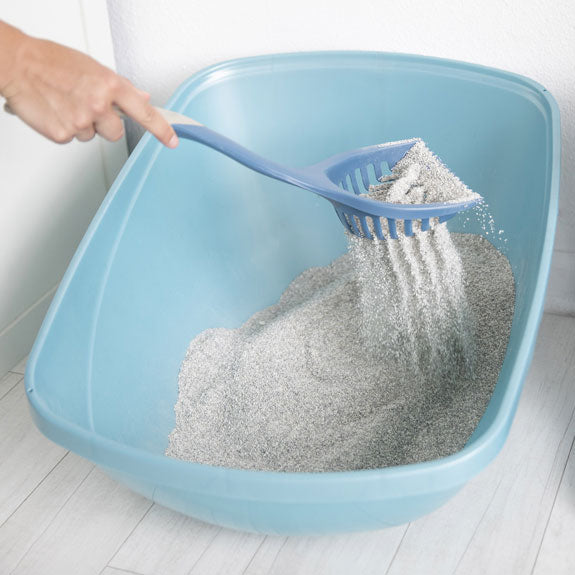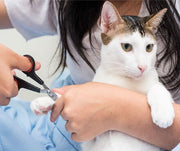Litter Box Tips and Tricks For Every Cat Owner

Whether you're a brand new cat owner or you have been fond of feline friends for years, chances are you already know the value and importance of having a litter box. After all, no pet owner likes waking up to their cat's business on the carpet, in the hallway, or in some cases, the bed.
One of the earliest challenges of being a new cat owner is making sure that cats do their business in the right place. While the process may be easy for some cat owners, others may have a more difficult time potty training their cats. There's no one size fits all approach to litter box training and behavior, which is why it is crucial to know what type of litter box you should aim for. Today, we're going to tackle some of the best practices and considerations that you may want to look into when thinking of purchasing a new litter box for your cats.
LITTER BOX SIZE
Pretty much self-explanatory, one of the most important factors you should always look into is the size of your cat's litter box. Just like humans, it's easier and much more comfortable to defecate in a spacious and comfortable area. You also should be aware of how your cat behaves when inside enclosed spaces. If your cat shows discomfort moving around in a small space, then it will help to invest in a larger litter box.
Another thing you'll want to consider is the size of your actual cat. Kittens may have a difficult time jumping in and out of boxes with high sides, while older and larger cats may find it uncomfortable on their end to go dump without having privacy (yes, cats can be shy, too). It's important to note that cats usually move around in circles before dumping, so having a little extra space in your cat's litter box is never a bad idea. It also helps to understand your cat's locomotive tendencies and preferences.
Your home's space may also be a factor in your picking out the right size litter box. Your options certainly differ whether you live in a four-bedroom house or a studio apartment. For tighter spaces, consider a Corner Litter Pan designed specifically for smaller spaces. If you own more than one cat, you should have at least one box for each cat. Consider all of this before heading on to your nearest trusted pet store.
TYPE OF LITTER
The type of litter chosen will most likely depend on your cat rather than your own preference. Some owners randomly buy different sorts of litter to test which ones their cat will deem fit. You may also want to look into the material used and its texture. The material should be comfortable enough for your cat to walk on and bury into. Also, be sure to make sure that the litter does not irritate your cat in any way.
There are there common types of litter, such as litter with finer clumps and litter that is more coarse. Additionally, you may want to consider the amount of litter you put in your cat's litter box. Cats tend to dig and scrape their litter to bury their poop. It's recommended to have at least 2 to 3 inches of litter in the box, as some cats prefer to leave no trace of their droppings.
Lastly, there are litters with certain scents. Since cats have a heightened sense of smell, choosing and identifying their preferred scent is equally important. Scented litters can trigger allergic reactions to some, so it's best to identify your cat's tendencies. Unscented options are also widely available. It won't hurt to do further research on potential litter types, depending on your pet's needs and sensitivity. Consider your own anti-odor needs as well!
CLEANING

Another similarity between humans and cats is that they have a keen sense of keeping things clean. Oftentimes, messy and foul-smelling litter boxes can cause your cat to consider pooping in other areas of the house. It's important to scoop cat poop on a daily basis, and it also helps to change cat litter every now and then, ideally, twice a week.
You also need to clean the litter box itself every now and then. Since your cat uses it every day, chances are the accumulated odor will have a negative effect on your cat's elevated sense of smell. It helps to wash the box with soap and water or wipe down with Arm & Hammer Litter Pan Cleaning Wipes. Whatever you use, be sure not to use anything that emits a strong scent that may cling to the surface of the litter box. Another good option is to rinse the box with warm water to help eliminate germs and bacteria that may be present. Afterward, wipe it dry with a cloth or a towel before adding litter to the box.
PLACEMENT
No one likes an audience while using the restroom. The ideal place to put your litter box in is a corner of your home with limited movement and action. Just like most living creatures, "doing your business" requires peace and quiet. You'll also want to place the box in a space that is easily accessible to both you and your cat. You're also going to want to observe and monitor your cat's tendencies if you decide to transfer the litter box to another place in the house. If your cat prefers a certain location, then it may be worth a try to keep the litter box there.
Whichever size or style litter box you decide on and wherever you decide to place the litter box, the most important thing is that you remain vigilant with cleaning, emptying, and replacing litter on time. With time, practice, and a little encouragement, you and your cat are bound to find the perfect litter routine.
Previous article

Next article

Related posts
View all-

Setting Up the Perfect Cat Space: Essential Furniture and Accessories
Creating a dedicated space for your cat can make life better for both you and your furry friend. For cat parents, having the right furniture and accessories ensures your pet feels comfortable, entertained, and safe. A well-thought-out setup also blends seamlessly with your home, keeping both human furniture and cat-approved pieces in harmony.
Read Article -

New Dog Checklist: Everything You Need for Bringing Home a New Dog
Bringing a new dog home is exciting, but it can also feel a bit overwhelming if you’re not fully prepared. Without the right supplies, the first few days can be stressful for both you and your new furry friend. Imagine bringing your adopted dog home only to realize you forgot something as simple as a dog brush or training treats. It can leave you scrambling and unsure of where to start.
Read Article -

New Kitten Checklist: Getting Your Home Ready For Your New Cat
Whether you're a first-time kitten parent or a kitten parent pro, bringing home a new kitten is always an exciting time. Watching your kitten get used to their new surroundings is one of the cutest things you could witness. However, if you're not prepared, your kitten may have a harder time adjusting. To get prepared, keep reading for our New Kitten Checklist.
Read Article



